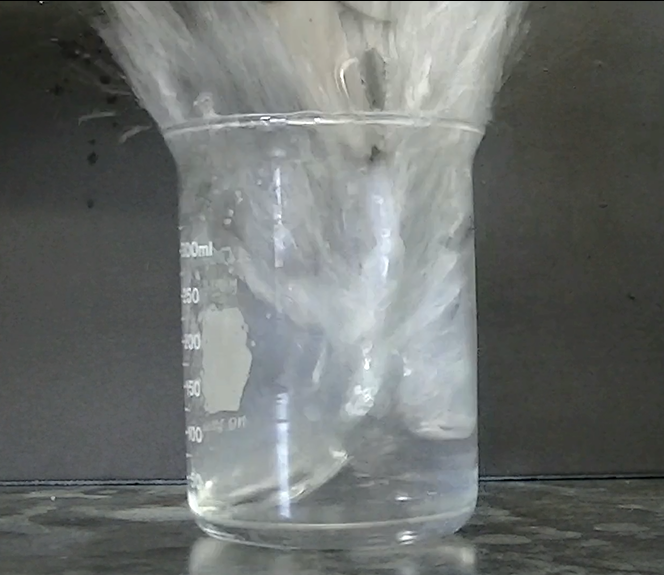Is Dry Ice Turning Into Gas a Chemical Change
To make dry ice carbon dioxide gas is first cooled and pressurized to turn it into a liquid according to Continental Carbonic Products Inc a dry ice manufacturer. The secret is in the chemical composition of dry ice which is carbon dioxide in solid form.
Because of its low temperature at normal atmospheric pressure it is useful as a coolant.

. Dry ice is actually solid frozen carbon dioxide which happens to sublimate or turn to gas at a chilly -785 C -1093F. A physical change can often to seen with the eye though there are five specific signs of a chemical change. The same carbon dioxide is still present it just undergoes a phase change to become a colorless gas.
695 F the triple point CO 2 changes. Actually dry ice undergoes a physical change when it sublimates from the solid to the gaseous state without first melting into a liquid. Is dry ice turning into carbon dioxide a physical or chemical change.
At room temperature carbon dioxide exists as a gasthe very gas we exhale every time we breath. Carbon dioxide has to be cooled to at least -1093 F to become a solid. The same carbon dioxide is still present it just undergoes a phase change to become a colorless gas.
Dry ice is solid. Dry ice is the solid form of carbon dioxide CO 2 a molecule consisting of a single carbon atom bonded to two oxygen atomsDry ice is colorless odorless and non-flammable and can lower the pH of a solution when dissolved in water forming carbonic acid H 2 CO 3. Is that a chemical or physical change.
Which of the following states a chemical property. When dry ice heats up it turns into a gas. Phase changes arent always clear when observing a situation.
The mist that forms when water is poured onto dry ice is just that. Is that a chemical or physical change. At pressures below 513 atm and temperatures above 564 C 2168 K.
Oxygen is a gas. Leave a Reply Cancel reply. Breaking a compound into its constituent elements.
This dry ice snow is compressed together under a large press to form blocks or extruded into various sized pellets. For example if you view the sublimation of dry ice into carbon dioxide gas the white vapor that is observed is mostly water that is condensing from water vapor in the air. When dry ice heats up it turns into a gas.
Your email address will. Dry ice subliming turning from a solid straight into a gas is an example of a chemical change. This must be a chemical change because a new substancefogforms Actually dry ice undergoes a physical change when it sublimates from the solid to the gaseous state without first melting into a liquid.
The sublimation of dry ice into gaseous carbon dioxide is a physical change. For those of us interested in the water cycle sublimation is most often used to describe the process of snow and ice changing into water vapor in the air without first melting into water. It sublimates or changes states from a solid to a gas at temperatures of -78 degrees Celsius under normal atmospheric pressure of 1 atm.
Water vapor condensing in the air from all the very cold gas being thrown off. Its not really a chemical reaction the water is simply turning the dry ice into a gas again. It does not undergo any chemical changes.
This must be a chemical change because a new substancefogforms. The liquid is then. As the temperature drops to -1093F the temperature of frozen CO 2 some will freeze into dry ice snow.
Put simply a chemical change changes the chemical structure of a substance and chemical bonds are broken and made whereas a physical change does not do those things. Dry ice is the solid form of carbon dioxide a molecule that is found as a gas in the air. When a chunk of dry ice is exposed to room temperature air it undergoes sublimation which means it changes from a solid directly into a gas without melting into a liquid first.
The liquid will flash with some turning into gas causing the remainder to cool.

Frozen Carbon Dioxide Dry Ice Sublimates Directly Into A Vapor U S Geological Survey

Dry Ice Experiments Compilation Chemistry Youtube

Simple Small Scale Dry Ice Explosions Chemical Education Xchange
Comments
Post a Comment